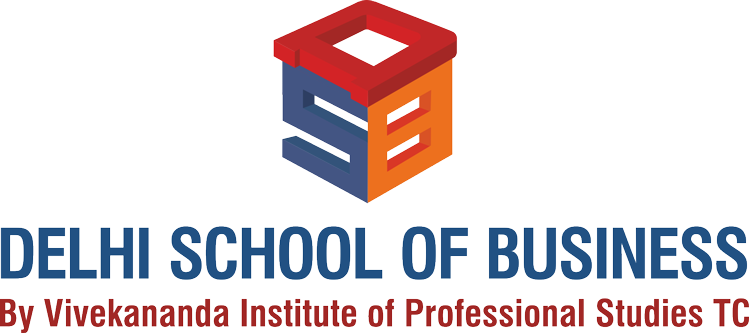
An Insight into SaaS & BaaS: Revolutionizing Everything From Cloud to Cash
Digital transformation is no longer a buzzword. It has become a reality, a necessity. In this rapidly evolving technological landscape, businesses are tirelessly trying to remain agile, innovative, and customer-centric. In this endeavour, Software as a Service (SaaS) and Banking as a Service (BaaS) have emerged as powerful platforms, driving the next wave of the digital revolution.
What is SaaS?

Software as a Service (SaaS), is a kind of cloud computing that provides users with access to software applications over the Internet. These applications are hosted on a cloud and managed by the service provider, relieving users from the need to install, manage, or update the software on their local servers or computers.
Why is SaaS the Future and Why is it Used?
The potential of SaaS stretches far beyond ease of use. By eliminating the need for hardware acquisition, provisioning, and maintenance, it significantly reduces upfront costs. Flexible payments make it an affordable solution for businesses of all sizes. It also provides scalable usage, allowing companies to scale up or down based on their requirements.
Moreover, automatic updates ensure users always have access to the latest features and security measures. Its accessibility from any internet-connected device makes it a perfect fit for today’s remote working culture. Given these advantages, it is no surprise that SaaS is being hailed as the future of software delivery.
SaaS Integration and the SaaS Business Model

SaaS platforms are designed for seamless integration into the existing IT infrastructure. It enables businesses to focus on their core competencies, leaving software-related issues to the SaaS provider.
The SaaS business model primarily relies on subscription-based revenue, with clients paying a fixed amount periodically to access the service. This ensures a steady revenue stream for providers and makes budgeting easier for clients.
On-Premise Vs SaaS: Why SaaS is Superior?

On-premise software comes with substantial initial costs, including hardware, software licenses, and installation, not to mention the ongoing costs of maintenance, updates, and IT staff.
SaaS, on the other hand, is subscription-based, translating to lower upfront costs. The fact that it is maintained by the service provider further eliminates the need for maintenance and IT staffing costs. Also, SaaS solutions are scalable, customizable, accessible from anywhere, and always up-to-date, making them the superior choice for most businesses.
SaaS Products and Companies we all know
The SaaS market is crowded with many players, each one offering its unique value proposition. Top global SaaS companies include Salesforce, known for its customer relationship management (CRM) software; Adobe, with its creative and multimedia software suite; Microsoft, offering a range of productivity tools and business solutions; and Google, with its robust G Suite of Office applications.
The Role of IaaS and PaaS along with SaaS

In the cloud computing realm, SaaS is one of the three primary service models, along with Infrastructure as a Service (IaaS) and Platform as a Service (PaaS).
- IaaS virtualized computing resources over the internet. IaaS provides physical and virtual resources that are used to build a cloud. These resources include servers, network hardware, storage, and data center space. Users can rent these resources as per their needs, thereby saving on the capital expenditure that would have been incurred if they were to set up their own infrastructure. Amazon Web Services (AWS), Google Cloud Platform, and Microsoft Azure are some of the examples of Iaas.
- PaaS delivers a platform for users to develop, run, and manage applications without the complexity of building and maintaining the infrastructure typically associated with application development. The PaaS provider manages the responsibility of housing the software and hardware components on their own infrastructural setup. As a result, developers can focus more on writing the code and the business logic, and less on managing hardware, software updates, and other routine IT management tasks. Examples of PaaS include Google App Engine, Heroku, and IBM Cloud Foundry.
SaaS delivers software applications over the web. IaaS provides virtualized computing resources over the Internet, and PaaS provides a platform for the creation and deployment of applications. Together, these models comprise the backbone of cloud computing, each serving distinct purposes but also complementing each other.
SaaS Uses in Different Sectors

Digital Marketing
Marketing teams leverage SaaS to automate tasks, streamline workflows, create content and improve campaign effectiveness. SaaS tools assist in email marketing, social media management, customer relationship management (CRM), and various forms of analytical tracking. These tools enable marketers to measure campaign effectiveness, user engagement, and return on investment in real-time.
Human Resource
HR professionals use SaaS for recruitment processes, streamline employee onboarding, assist in performance tracking, and even manage payroll. The advantage of these solutions lies in their ability to centralize data, allowing for seamless management and offering employees user-friendly self-service options. This promotes HR efficiency and boosts employee satisfaction.
Financial Sector
HR professionals use SaaS for recruitment processes, streamline employee onboarding, assist in performance tracking, and even manage payroll. The advantage of these solutions lies in their ability to centralize data, allowing for seamless management and offering employees user-friendly self-service options. This promotes HR efficiency and boosts employee satisfaction.
Education Sector
In education, SaaS facilitates online learning, course management, and collaboration among students and teachers. By providing extensive learning resources and a platform for interactive learning, SaaS tools enhance both teaching methodologies and the overall learning experience.
Healthcare
SaaS in healthcare provides numerous benefits, from improving patient care to optimizing operational processes. Electronic Health Records (EHR) systems, telehealth platforms, patient portals, and medical billing software are common SaaS applications in healthcare. They help streamline workflows, improve data accessibility, and ensure regulatory compliance.
Retail
In the retail sector, SaaS solutions offer a multitude of tools to improve both the customer experience and the retailer’s operations. E-commerce platforms, inventory management systems, Customer Relationship Management (CRM) tools, and analytics software are some of the SaaS solutions used in this sector. They help businesses optimize their supply chain, gain customer insights, and manage their online presence effectively.
What is BaaS?

Banking as a Service (BaaS) is a model where financial services capabilities are provided over the Internet via APIs. With BaaS, fintech companies, retailers, and other businesses can integrate banking services into their own products, without the need to establish a full-fledged bank.
Why is BaaS the Future of Banking?
BaaS holds the promise of a more inclusive and innovative financial services sector. Enabling non-banks to offer financial services, encourages competition, promotes innovation and potentially leads to better services for consumers. As customer expectations evolve, the demand for integrated, seamless financial services will only grow, making BaaS an increasingly attractive proposition.
How Does BaaS Work and How is it Used?

BaaS operates through APIs, which allow third parties to access banking services such as payments, transfers and account management on their platforms. Managed by a licensed bank, this infrastructure saves businesses from building complex banking functions from scratch.
Primarily utilized by fintech firms, BaaS facilitates services like digital wallets, payment gateways, and lending platforms. As we all know there is no finance without technology nowadays. This synergistic integration of existing platforms provides a smooth and convenient customer experience. Any business can leverage BaaS to integrate banking services, differentiate itself in the market, and enhance customer service.
BaaS Integration with Other Technologies
BaaS can be integrated with other technologies such as artificial intelligence, machine learning, and blockchain to offer advanced financial solutions. For example, AI can be used for personalized banking services, machine learning for predictive analysis in lending decisions, and blockchain for secure, transparent transactions. These integrations enhance the capabilities of BaaS platforms, opening up new paths for innovation.
The Intersection of SaaS and BaaS
The synergies between SaaS and BaaS open up a wide range of possibilities by combining the flexibility and scalability of SaaS with the innovation and customer-centricity of BaaS. Businesses can thus offer seamless, integrated experiences to their customers.

SaaS and BaaS are both service-based models, delivering software and banking services respectively over the Internet. An E-Commerce platform (SaaS) can integrate with BaaS to provide integrated payment and lending services. Similarly, a CRM system can incorporate BaaS to offer financial services to customers directly from the platform. These integrated solutions offer businesses a competitive edge by providing a comprehensive and customized experience to customers.
The seamless, scalable, and cost-effective nature of SaaS has already established it as the go-to software delivery model. BaaS is opening up the traditional financial services sector towards advanced and technologically evolved models, encouraging transparency and speed of operations and innovation in financial products.
As we navigate this exciting landscape, it’s clear that SaaS and BaaS are not just the future – they are the present!

